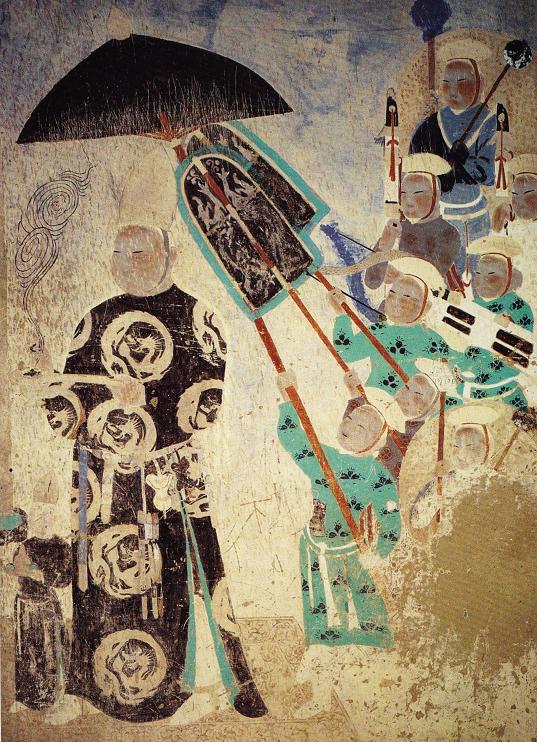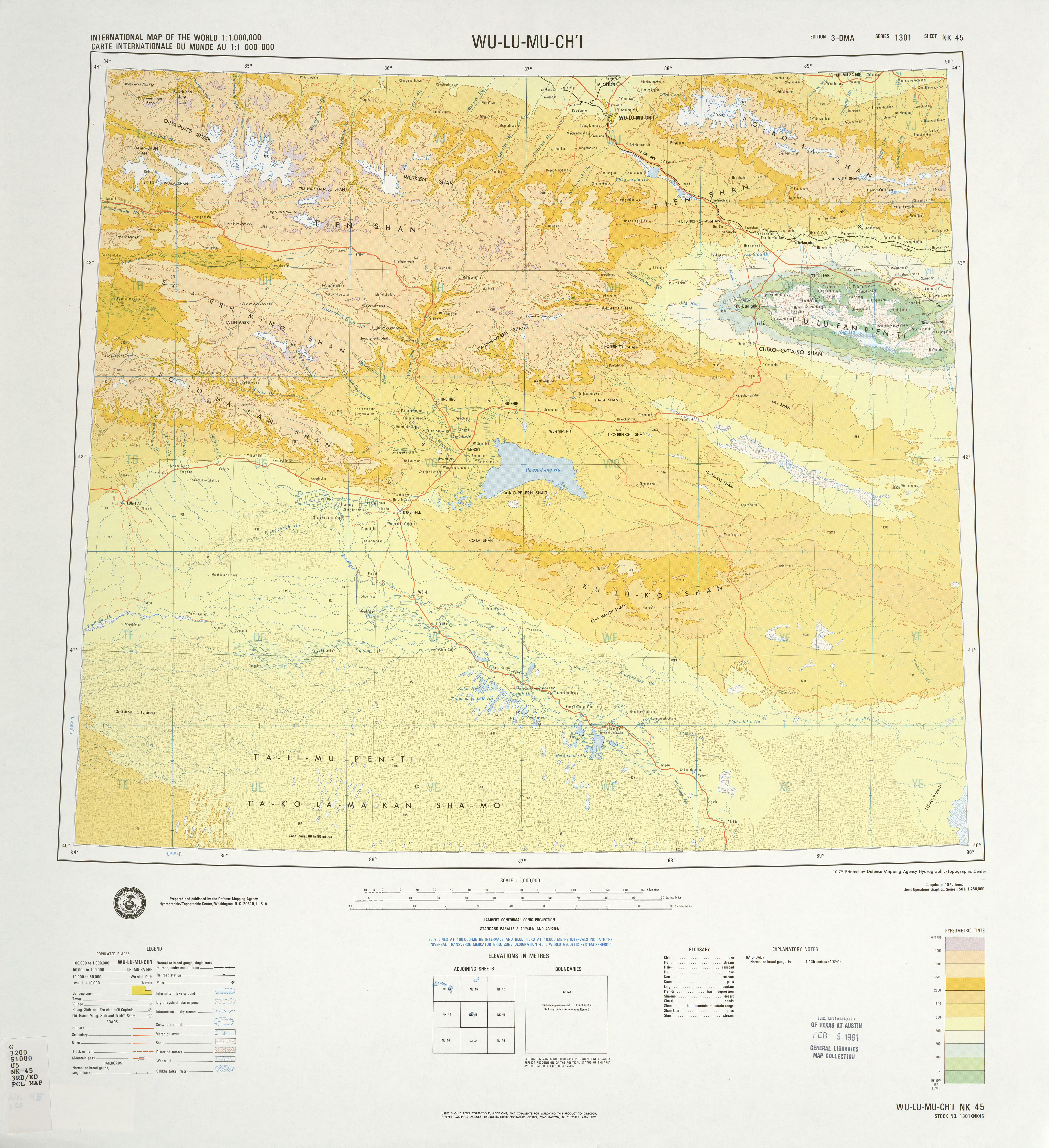|
Turpan Karez Paradise
Turpan Karez Paradise () is a museum featuring Turpan's karez water management system, in Turpan, a city in the Turpan Depression, Xinjiang, China. The karez is a vertical tunnel system connecting wells developed by the Turpan people to irrigate their arid land. The word ''karez'' means "well" (''karez'', ug, كارىز, kariz, 6=кариз) in the local Uyghur language. Visitors to the museum can learn about the underground irrigation system in the desert area, and see the karez system in operation. (in Chinese) This facility is in a relatively convenient location, about five kilometers from the city center of Turpan, about one kilometers from |
Turpan Karez Paradice
Turpan (also known as Turfan or Tulufan, , ug, تۇرپان) is a prefecture-level city located in the east of the autonomous region of Xinjiang, China. It has an area of and a population of 632,000 (2015). Geonyms The original name of the city is unknown. The form Turfan (while it is older than Turpan), was not used until the middle of the 2nd millennium CE and its use became widespread only in the post-Mongol period. Historically, many settlements in the Tarim Basin have been given a number of different names. Some of these names have also referred to more than one place: Turpan/Turfan/Tulufan is one such example. Others include Jushi/Gushi, Gaochang/Qocho/Karakhoja and Jiaohe/Yarkhoto. The center of the region has shifted a number of times, from Yar-Khoto (Jiaohe, to the west of modern Turpan) to Qocho (Gaochang, to the southeast of Turpan) and to Turpan itself. History Turpan has long been the centre of a fertile oasis (with water provided by the ''karez'' canal sys ... [...More Info...] [...Related Items...] OR: [Wikipedia] [Google] [Baidu] |
Turpan Museum
Turpan Museum () is a museum in Turpan, Xinjiang, China. It has items from the Tang dynasty excavated from the Astana Graves which are located outside the town. Items include ancient silks, clothes and preserved corpses. See also * List of museums in China * Silk Road transmission of Buddhism Buddhism entered Han China via the Silk Road, beginning in the 1st or 2nd century CE. The first documented translation efforts by Buddhist monks in China were in the 2nd century CE via the Kushan Empire into the Chinese territory bordering the ... References Archaeological museums in China Buildings and structures in Turpan Museums in Xinjiang National first-grade museums of China {{PRChina-museum-stub ... [...More Info...] [...Related Items...] OR: [Wikipedia] [Google] [Baidu] |
Turpan
Turpan (also known as Turfan or Tulufan, , ug, تۇرپان) is a prefecture-level city located in the east of the autonomous region of Xinjiang, China. It has an area of and a population of 632,000 (2015). Geonyms The original name of the city is unknown. The form Turfan (while it is older than Turpan), was not used until the middle of the 2nd millennium CE and its use became widespread only in the post-Mongol period. Historically, many settlements in the Tarim Basin have been given a number of different names. Some of these names have also referred to more than one place: Turpan/Turfan/Tulufan is one such example. Others include Jushi/Gushi, Gaochang/Qocho/Karakhoja and Jiaohe/Yarkhoto. The center of the region has shifted a number of times, from Yar-Khoto (Jiaohe, to the west of modern Turpan) to Qocho (Gaochang, to the southeast of Turpan) and to Turpan itself. History Turpan has long been the centre of a fertile oasis (with water provided by the ''karez'' canal sy ... [...More Info...] [...Related Items...] OR: [Wikipedia] [Google] [Baidu] |
Turpan Depression
The Turpan Depression or Turfan Depression, is a fault (geology), fault-bounded trough located around and south of the city-oasis of Turpan, in the Xinjiang, Xinjiang Autonomous Region in far Western China, about southeast of the regional capital Ürümqi. It includes Lake Ayding, , the List of places on land with elevations below sea level, second or third lowest Depression (geology), depression on Earth. By some measures, it is also the hottest and driest area in China during the summer. Geology and relief The Turpan Basin is a fault-bounded trough located in the eastern part of the Tian Shan. It covers an area of . The surrounding mountain ranges are: the central Tian Shan in the west, the Bogda Shan in the north-west, the Haerlike Shan in the north-west, and the Jueluotage Shan in the south. Beyond the surrounding mountain ranges lie the Dzungaria, Junggar Basin in the north and the Tarim Basin in the south. Some geographers also use the term Turpan-Hami Basin, which is un ... [...More Info...] [...Related Items...] OR: [Wikipedia] [Google] [Baidu] |
Xinjiang
Xinjiang, SASM/GNC: ''Xinjang''; zh, c=, p=Xīnjiāng; formerly romanized as Sinkiang (, ), officially the Xinjiang Uygur Autonomous Region (XUAR), is an autonomous region of the People's Republic of China (PRC), located in the northwest of the country at the crossroads of Central Asia and East Asia. Being the largest province-level division of China by area and the 8th-largest country subdivision in the world, Xinjiang spans over and has about 25 million inhabitants. Xinjiang borders the countries of Mongolia, Russia, Kazakhstan, Kyrgyzstan, Tajikistan, Afghanistan, Pakistan and India. The rugged Karakoram, Kunlun and Tian Shan mountain ranges occupy much of Xinjiang's borders, as well as its western and southern regions. The Aksai Chin and Trans-Karakoram Tract regions, both administered by China, are claimed by India. Xinjiang also borders the Tibet Autonomous Region and the provinces of Gansu and Qinghai. The most well-known route of the historic Silk Ro ... [...More Info...] [...Related Items...] OR: [Wikipedia] [Google] [Baidu] |
China
China, officially the People's Republic of China (PRC), is a country in East Asia. It is the world's most populous country, with a population exceeding 1.4 billion, slightly ahead of India. China spans the equivalent of five time zones and borders fourteen countries by land, the most of any country in the world, tied with Russia. Covering an area of approximately , it is the world's third largest country by total land area. The country consists of 22 provinces, five autonomous regions, four municipalities, and two Special Administrative Regions (Hong Kong and Macau). The national capital is Beijing, and the most populous city and financial center is Shanghai. Modern Chinese trace their origins to a cradle of civilization in the fertile basin of the Yellow River in the North China Plain. The semi-legendary Xia dynasty in the 21st century BCE and the well-attested Shang and Zhou dynasties developed a bureaucratic political system to serve hereditary monarchies, or dyna ... [...More Info...] [...Related Items...] OR: [Wikipedia] [Google] [Baidu] |
Karez
A qanat or kārīz is a system for transporting water from an aquifer or water well to the surface, through an underground aqueduct; the system originated approximately 3,000 BC in what is now Iran. The function is essentially the same across North Africa and the Middle East but the system operates under a variety of regional names: ''qanat'' or kārīz in Iran, ''foggara'' in Algeria, ''khettara'' in Morocco, ''falaj'' in Oman, ''karez'' in Afghanistan, ''auyoun'' in Saudi Arabia, et al. The largest extant and functional qanat systems are located in Iran, Afghanistan, Oman, the oases of Turfan region of China, Algeria, and Pakistan. This is a system of water supply that allows water to be transported over long distances in hot dry climates without loss of much of the water to evaporation. The system has the advantage of being resistant to natural disasters such as earthquakes and floods, and to deliberate destruction in war. Furthermore, it is almost insensitive to the level ... [...More Info...] [...Related Items...] OR: [Wikipedia] [Google] [Baidu] |
Uyghur Language
The Uyghur or Uighur language (; , , , or , , , , CTA: Uyğurçä; formerly known as Eastern Turki), is a Turkic language written in a Uyghur Perso-Arabic script with 8-11 million speakers, spoken primarily by the Uyghur people in the Xinjiang Uyghur Autonomous Region of Western China. Significant communities of Uyghur speakers are located in Kazakhstan, Kyrgyzstan, and Uzbekistan, and various other countries have Uyghur-speaking expatriate communities. Uyghur is an official language of the Xinjiang Uyghur Autonomous Region; is widely used in both social and official spheres, as well as in print, television, and radio; and is used as a common language by other ethnic minorities in Xinjiang. Uyghur belongs to the Karluk branch of the Turkic language family, which includes languages such as Uzbek. Like many other Turkic languages, Uyghur displays vowel harmony and agglutination, lacks noun classes or grammatical gender, and is a left-branching language with subject–obj ... [...More Info...] [...Related Items...] OR: [Wikipedia] [Google] [Baidu] |
China National Highway 312
China National Highway 312 (312国道), also referred to as Route 312 or The Mother Road, is a key east-west route beginning in Shanghai and ending at Khorgas, Xinjiang in the Ili River valley, on the border with Kazakhstan. In total it spans , passing through Jiangsu, Anhui, Henan, Shaanxi, Gansu before ending in Xinjiang. Besides Shanghai, cities of note on the route include Suzhou, Wuxi, Nanjing, Hefei, Xinyang, Nanyang, Xi'an, Lanzhou, Jiayuguan and Ürümqi. It theoretically starts at People's Square, the Zero-Kilometre point for all highways starting in Shanghai, but the first part of the road, Cao-An Highway, starts at Cao-Yang New Village. The road was the subject of Rob Gifford's 2007 book ''China Road'', in which he describes traveling the entire length of Route 312 from the East China Sea to Central Asia. The G40 Shanghai–Xi'an Expressway has replaced National Highway 312 as the main route between those two cities. Route and distance Accidents On October 10 2 ... [...More Info...] [...Related Items...] OR: [Wikipedia] [Google] [Baidu] |
Hajji
Hajji ( ar, الحجّي; sometimes spelled Hadji, Haji, Alhaji, Al-Hadj, Al-Haj or El-Hajj) is an honorific title which is given to a Muslim who has successfully completed the Hajj to Mecca. It is also often used to refer to an elder, since it can take years to accumulate the wealth to fund the travel (and did particularly before the advent of mass air travel), and in many Muslim societies to a respected man as an honorific title. The title is placed before a person's name; for example, Saif Gani becomes ''Hajji Saif Gani''. Hadži is also used in Orthodox Christianity for people who go on pilgrimage to the grave of Christ in Jerusalem. It can then be added to the pilgrim's first name, e.g., Hadži-Prodan, Hadži-Đera, Hadži-Ruvim, Hadži-Melentije Stevanović Hajji is derived from the Arabic ', which is the active participle of the verb ' ("to make the pilgrimage"). The alternative form ' is derived from the name of the Hajj with the adjectival suffix -''ī'', and this w ... [...More Info...] [...Related Items...] OR: [Wikipedia] [Google] [Baidu] |
Turpan Water System
The Turpan water system or Turfan karez system ug, كارىز, kariz, 6=кариз) in Turpan, located in the Turpan Depression, Xinjiang, China, is a vertical tunnel system adapted by the Uyghur people. The word ''karez'' means "well" in the local Uyghur language. Turpan has the Turpan Karez Paradise museum (a Protected Area of the People's Republic of China) dedicated to demonstrating its ''karez'' water system, as well as exhibiting other historical artifacts. Turpan's karez well system was crucial in Turpan's development as an important oasis stopover on the ancient Silk Road skirting the barren and hostile Taklamakan Desert. Turpan owes its prosperity to the water provided by its karez well system. Description Turpan's karez water system is made up of a horizontal series of vertically dug wells that are then linked by underground water canals to collect water from the watershed surface runoff from the base of the Tian Shan Mountains and the nearby Flaming Mountai ... [...More Info...] [...Related Items...] OR: [Wikipedia] [Google] [Baidu] |


.jpg)




_Xinjiang%2C_China_-_panoramio_(1).jpg)
